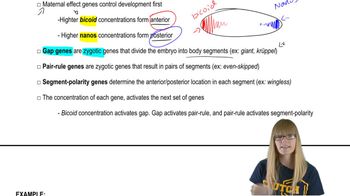Here are the essential concepts you must grasp in order to answer the question correctly.
Lateral Gene Transfer (LGT)
Lateral Gene Transfer refers to the process by which organisms transfer genetic material between each other, rather than through traditional reproduction. This mechanism is particularly prevalent in bacteria, allowing them to acquire new traits rapidly, such as antibiotic resistance or metabolic capabilities, which can significantly influence their survival and adaptation.
Recommended video:
Bacterial Genome Evolution
Bacterial genome evolution involves the changes in the genetic makeup of bacterial populations over time. This evolution can occur through mutations, gene duplications, and especially through LGT, which introduces genetic diversity and enables bacteria to adapt to new environments or challenges, such as the presence of antibiotics.
Recommended video:
Impact of LGT on Evolutionary Dynamics
The impact of LGT on evolutionary dynamics is profound, as it can lead to rapid changes in bacterial populations. By facilitating the exchange of beneficial genes, LGT can accelerate adaptation and evolution, allowing bacteria to quickly respond to environmental pressures, which can result in the emergence of new strains and influence ecological interactions.
Recommended video:
Human Transposable Elements






